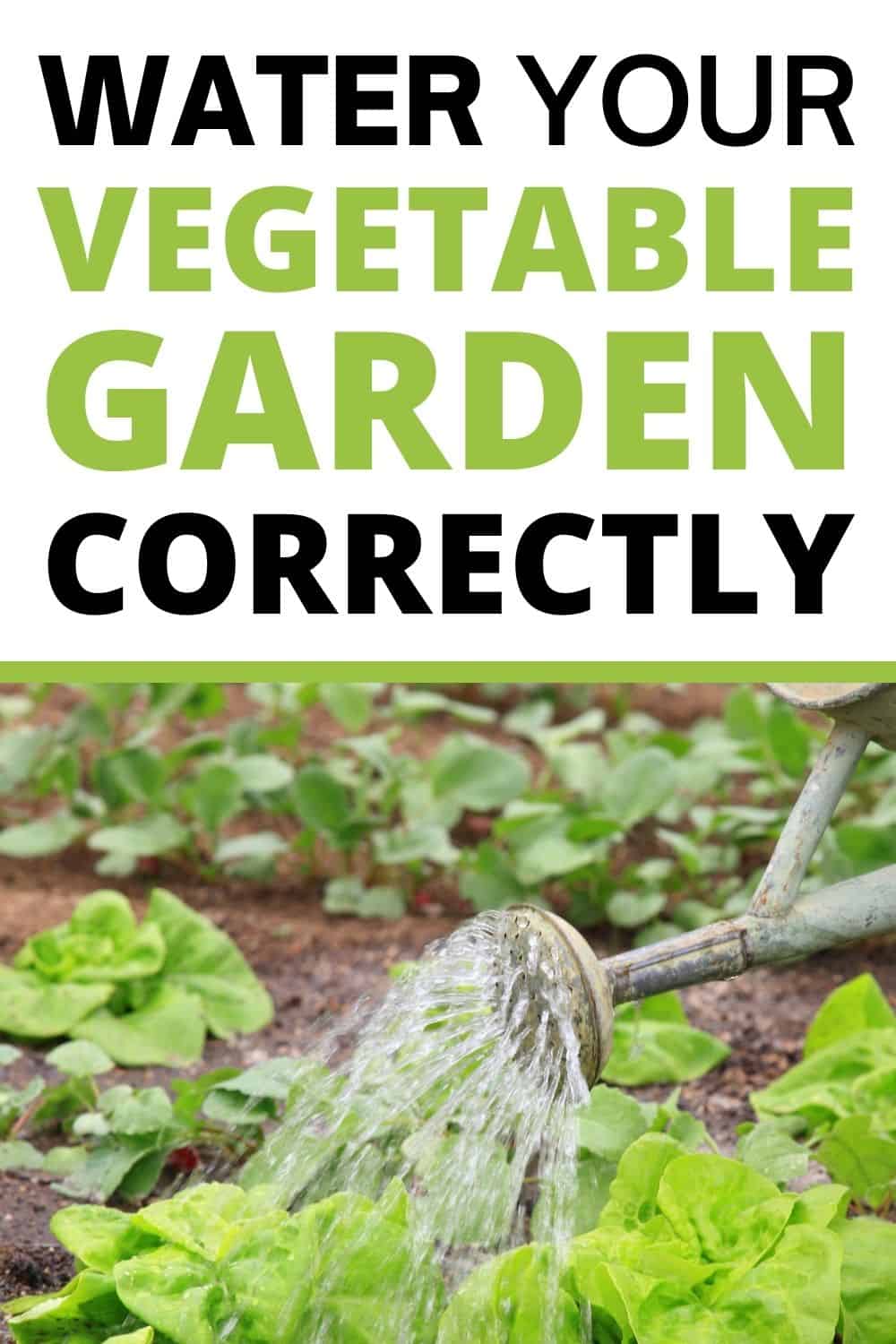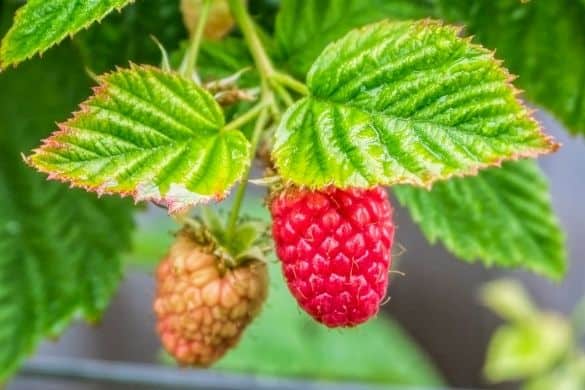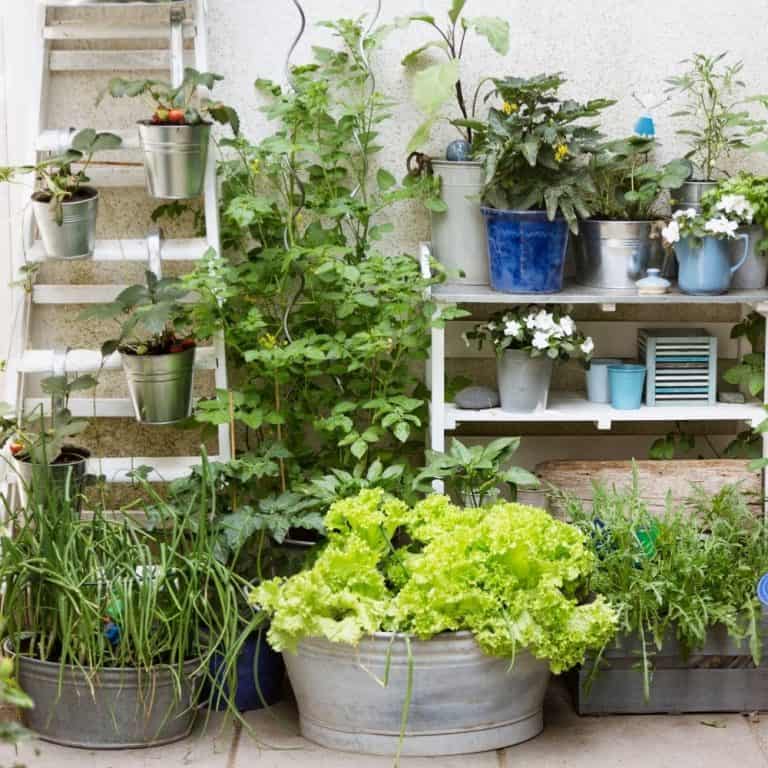How to Water Your Vegetable Garden Correctly
This post may contain affiliate links. Please read our disclosure policy.
Preparing your garden and planting seeds and starts is arguably the most time-intensive part of gardening. However, once you’ve planted, you’ll just need to weed your garden often and water it regularly while you wait for your harvest.

Watering your garden might seem like an easy task, but it’s important to learn how to water your vegetable garden correctly. If you water it at the wrong time, you’ll be wasting time and water. Water it too often, and you can risk fungus or destroying your plants.
Even watering incorrectly can harm your plants and lower their yield or even kill them before they can produce vegetables. Learn how and when to water your vegetable garden for a better yield and more food to feed your family.
How to Water Your Vegetable Garden Correctly
How to Water Seeds in Your Garden
Some plants can be started from seeds planted directly into your garden. You want to keep the top layer of soil wet consistently until the seeds start to germinate.
Unless you get some rain, plan to water your seeds every day or every other day. Watering with a hose can disturb the seeds and can even ruin them. Use a watering can with a rain spout for a gentle watering that won’t harm seeds while they germinate.
Depending on what vegetable you planted, this can take one to three weeks of daily watering. Once the seeds break through the ground, you can water them once or twice a week. If it’s very hot, water them more frequently when the soil looks dry.
How to Water New Plants
When you plant a vegetable start in your garden, it doesn’t have a large root system yet. Until the roots grow in about two weeks, you’ll need to water them more often.
Keep the soil wet by watering them every day or every two days until they start to grow a little bit. After a week or two, you can start watering them once or twice a week.
How to Water Vegetable Plants
Once your seeds have sprouted above the surface of the soil or plants have started to grow and established a root system, you’ll want to change your watering habits.
Now you can offer the plants more water at each watering that will seep deeper into the soil. If you don’t water enough at each watering, the water will only be on the top layer of the soil, which won’t encourage the roots to grow.
Know What Type of Soil You Have
The soil in your backyard garden is made of rocks, clay, sand, silt, minerals, organic matter, and water. It’s important to know what type of soil you have because it will change your watering habits.
For example, soil with a high clay content holds onto water longer, so you can water your vegetable garden less often. If you have a lot of sand in your soil, the water will travel quickly through the soil, and you’ll have to water your garden more often. If your soil is high in silt, it’s in the middle of clay and sand for water absorption.
You can usually tell what type of soil you have by feeling it. Get a handful of damp soil and rub it in your hands. If it feels gritty, then you have a lot of sand. If it’s slimy and slick, then it’s mostly clay.
How Much Water Do Vegetables Need?
Generally, established plants need one-inch water per week both from rain and from you watering it. However, your soil type can influence this. Generally, you can water your garden once a week but plan to water it twice a week if you have sandy soil, or more if it’s very hot especially if the soil looks dry.
You can keep track of how much it rains with a rain gauge. Once you’ve been guarding for a few years, you’ll learn how to estimate how much water your garden needs by looking at the soil and feeling it a few inches below the surface.
The Best Time of the Day To Water
Morning is the best time of the day to water a vegetable garden. It’s often cooler in the morning, so you’ll lose less water to evaporation. This also gives your plants the entire day to dry out so the leaves and plant aren’t soaking in water.
Mornings are often a busy time of the day, so it might not be possible to water your garden in the morning. Watering in the evening is also acceptable. It’s cooler in the evening, but you could risk getting too much water on the plant and leaves. Be mindful of where you are watering and try not to get the leaves wet.
Avoid watering during the afternoon because the water evaporates quickly. This wastes water, and your plants might not get all of the water that they need.
The Best Way to Water Vegetable Plants
How you water your plants is as important as when you water and how often you water your plants. If you water too aggressively, you risk harming the plant. Water can break leaves or stems, which can kill a plant.
Excess water on the leaves risks growing fungus or bacteria on the plant. These microbes can quickly spread and ruin all of your plants.
For best results, water the plants on the ground close to the base of the plant. A drip irrigation system works well to keep the base of your plants wet and not harm the plants. However, they can be costly to buy.
Watering by hand is perfectly fine for watering your vegetable garden. It’s best to use a watering can with a slow stream of water. If the water flows too fast, the water will run off and not water your plant properly.
If you want to water your garden with a hose, use a watering wand. This slows down the stream. It also gives you some extra distance to make it easy to water the base of the plant.
Water each plant for about 30 to 60 seconds. If the water makes a pudding on top of the soil, you can stop watering and move on to the next plant.
Avoid watering between plants. This can encourage weeds to grow, which means more work weeding later.
Use Mulch in Your Garden
Mulch not only helps keep weeds to a minimum, but it also helps the soil trap moisture. Bare soil loses water by evaporation during the day. However, mulch prevents water loss and helps keep the soil moist. Use leaves, grass clippings, or straw for an inexpensive mulch.
Now you know how to water your vegetable garden correctly. These tips will help you save water, save time, and increase your harvest for more food for your family.
WHAT’S NEXT?
You may also enjoy these vegetable growing tips & ideas on A Crazy Family –



